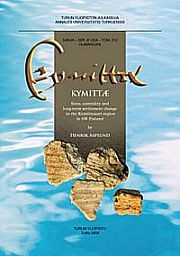Product desciption
Kymitt Sites Centrality And Longterm Settlement Change In The Keminsaari Region In Sw Finland Henrik Asplund by Henrik Asplund 9789512936274, 9789512936281, 9512936275, 9512936283 instant download after payment.
Archaeological studies in Finland were recently supplemented by a comprehensive doctoral thesis on settlement archaeology in the Kemionsaari region, written by Henrik Asplund (University of Turku). This region is located in south-westernmost corner of Finland and covers both the island of Kemionsaari, which was called Kymittae in early written sources, and some neighbouring municipalities on Finnish mainland. Archaeological research of the area was already started in the late 19th century; yet the most significant fieldwork belongs to the recent decades and was mostly carried out by the author.
The author himself labels his main research method as settlement-archaeological. Although this branch of archaeology is already known for one hundred years, it has strongly altered and developed during this time and the term itself is rather complex. Settlement archaeological research has had remarkable peculiarities both in different countries and in different times; its nature (e.g. research topics and questions) depends on local conditions (achievements of earlier research, specifics of archaeological material) as well as on general development of archaeological theory (what are the questions to be answered). Therefore the settlement-archaeological research in south-western Finland cannot be similar to, and use the same methods as, that in northern Finland, for instance, not speaking of more distant areas. In the same way this research in south-western Finland in the early 21st century cannot follow the same pattern and ask the same questions as the corresponding research in the same area 30 years ago (when the first modern settlement-archaeological project was carried out in Finland). It is important to underline that this settlement-archaeological research method used by Asplund in his thesis is original and partly developed by himself on the basis of earlier studies both in south-western Finland and neighbouring countries (particularly in Scandinavia and Estonia).
The text of the book is clear, written in style adequate for archaeology, easy to read and understand. The structure of the treatment is well-grounded and logical; it starts from the introduction into the topic and research area and the presentation of the author's theoretical framework, then continues with the presentation of archaeological material in chronological order, and then reaches the discussion of many particular problems concerning the development of settlement, land use, material culture and society. The main emphasis is on the Bronze Age and particularly on the Early Iron Age, which is understandable due to the available material and the author's own research interests.
The main objective has been defined as the explanation of causes for the differences between the Finnish archipelago and neighbouring mainland, particularly regarding the Iron Age. Yet, there are dozens and dozens of other questions, of both bigger and smaller scale, presented in the whole text in corresponding chapters (e.g. the specifics and problematics of archaeological sites, the causes of continuity and discontinuity in archaeological record, man-and-environment relationships through prehistory, forms of social organization in different periods, development of land use, etc.). As much as possible in the light of the current state of research, these questions have also been answered by the author.


